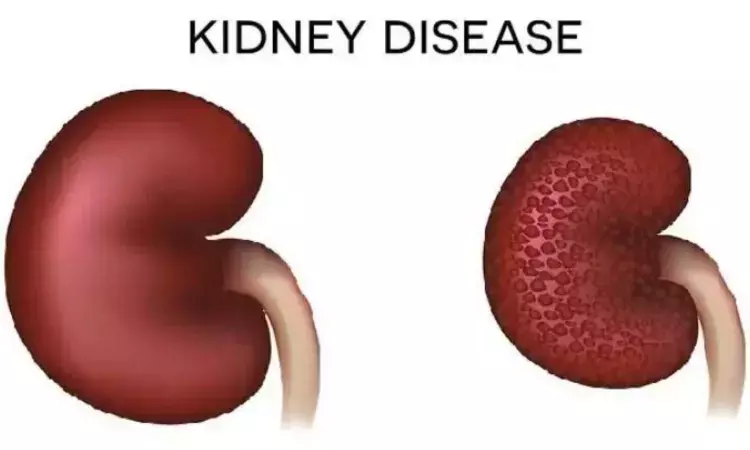- Home
- Medical news & Guidelines
- Anesthesiology
- Cardiology and CTVS
- Critical Care
- Dentistry
- Dermatology
- Diabetes and Endocrinology
- ENT
- Gastroenterology
- Medicine
- Nephrology
- Neurology
- Obstretics-Gynaecology
- Oncology
- Ophthalmology
- Orthopaedics
- Pediatrics-Neonatology
- Psychiatry
- Pulmonology
- Radiology
- Surgery
- Urology
- Laboratory Medicine
- Diet
- Nursing
- Paramedical
- Physiotherapy
- Health news
- Fact Check
- Bone Health Fact Check
- Brain Health Fact Check
- Cancer Related Fact Check
- Child Care Fact Check
- Dental and oral health fact check
- Diabetes and metabolic health fact check
- Diet and Nutrition Fact Check
- Eye and ENT Care Fact Check
- Fitness fact check
- Gut health fact check
- Heart health fact check
- Kidney health fact check
- Medical education fact check
- Men's health fact check
- Respiratory fact check
- Skin and hair care fact check
- Vaccine and Immunization fact check
- Women's health fact check
- AYUSH
- State News
- Andaman and Nicobar Islands
- Andhra Pradesh
- Arunachal Pradesh
- Assam
- Bihar
- Chandigarh
- Chattisgarh
- Dadra and Nagar Haveli
- Daman and Diu
- Delhi
- Goa
- Gujarat
- Haryana
- Himachal Pradesh
- Jammu & Kashmir
- Jharkhand
- Karnataka
- Kerala
- Ladakh
- Lakshadweep
- Madhya Pradesh
- Maharashtra
- Manipur
- Meghalaya
- Mizoram
- Nagaland
- Odisha
- Puducherry
- Punjab
- Rajasthan
- Sikkim
- Tamil Nadu
- Telangana
- Tripura
- Uttar Pradesh
- Uttrakhand
- West Bengal
- Medical Education
- Industry
RAAS and SGLT2 Inhibitor combo increases survival in Patients with Albuminuric CKD without Diabetes

Washington: About half of patients with CKD do not have diabetes but experience high rates of kidney failure and early death. These patients are typically treated with ACE inhibitors/ARBs, when presented with albuminuria. The SGLT2 inhibitor dapagliflozin, which is designed to lower blood sugar levels, has been shown to have kidney- and heart-protective effects in patients with CKD with and without diabetes.
Researchers in a new study have highlighted the potential to lower the burden of chronic kidney disease (CKD) complications by delaying or even preventing kidney failure and premature death if currently available treatments are appropriately utilized—specifically, offering patients combination therapy of angiotensin-converting enzyme inhibitors and/or angiotensin receptor blockers (ACE inhibitors/ARBs) and sodium-glucose cotransporter-2 (SGLT2) inhibitors.
New research has been published in CJASN.
Priya Vart, PhD (University Medical Center Groningen, in the Netherlands) and his colleagues conducted a study to estimate lifetime survival free of kidney failure for patients with albuminuric CKD without diabetes treated with the combination therapy of ACE inhibitors/ARB and SGLT2 inhibitors relative to patients not treated.
The study used estimates from clinical trials of the effect of treatment with ACE inhibitors/ARBs (ramipril/benazepril) (in 690 patients) and SGLT2 inhibitors (dapagliflozin) (in 1,398 patients) compared with placebo to derive the indirect estimate of the effect of combination therapy vs. no treatment. Using this effect, investigators estimated the treatment effect of combination therapy among patients with albuminuric CKD without diabetes in the DAPA-CKD trial (697 patients) and projected kidney failure–free and overall survival for those treated and not treated with combination therapy. The primary outcome was a composite of doubling of serum creatinine (a marker of kidney dysfunction), kidney failure, or death.
Combination therapy with ACE inhibitors/ARBs and SGLT2 inhibitors was associated with a 65% lower risk of the primary outcome compared with no treatment. For a 50-year-old-patient, the estimated survival free from the primary outcome was 17.0 years with the combination therapy and 9.6 years with no treatment with any of these agents, corresponding to a gain in eventfree survival of 7.4 years. Even when assuming that the effect of combination therapy is not completely additive and that treatment adherence and efficacy may wane over time, there was a gain in eventfree survival of 5.3 to 5.8 years.
"The present study provides estimates of treatment benefit expressed in extra years free from the disease or death that is easy to understand for patients, clinicians, and policy makers. This may facilitate risk communication in clinical management, increase uptake of these therapies in clinical practice, and inform decision making by policy makers and payers," the authors wrote.
An accompanying editorial notes that the findings also provide a tool for advocacy efforts to improve access to and coverage for kidney-protective medicines, especially SGLT2 inhibitors, which are currently cost prohibitive to many.
References: Priya Vart, Muthiah Vaduganathan, Niels Jongs, Giuseppe Remuzzi, David C. Wheeler, Fan Fan Hou, Finnian McCausland, Glenn M. Chertow and Hiddo J.L. Heerspink CJASN November 2022, CJN.08900722; DOI:https://doi.org/10.2215/CJN.08900722
Dr Kamal Kant Kohli-MBBS, DTCD- a chest specialist with more than 30 years of practice and a flair for writing clinical articles, Dr Kamal Kant Kohli joined Medical Dialogues as a Chief Editor of Medical News. Besides writing articles, as an editor, he proofreads and verifies all the medical content published on Medical Dialogues including those coming from journals, studies,medical conferences,guidelines etc. Email: drkohli@medicaldialogues.in. Contact no. 011-43720751


